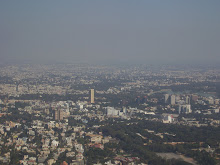
Kanchipuram in Tamilnadu is the city of temples. The temple town is the district headquarters and was the historical capital of the Pallavas during the 7th -9th Centuries and the entire city is filled with temples dating from the 8th -17th centuries. The Pallava rulers were one of the most powerful rulers of their times and their time is marked as one of the most glorious empires in world history. They laid the foundation to the classical Dravidian Architecture and many of the fabulous sculptures and temples have survived to this day.

These temples are enchanting and one can spend hours going back into history imagining the splendid times of these periods. The tall majestic carved towers, the wonderful architecture and the intricate stone carvings are entrancing. Some of the stories carved on these temples are very significant in history and some express a lot about the spirituality of the civilizations during those periods. The Pallavas were famous for the rock cut and structural temples at Mahabalipuram and Kanchipuram respectively. The region has been ruled successively by Cholas and the Vijayanagar empires.

Kanchi as it is fondly known is a pilgrim centre and houses some of the best architectural monuments of South India. Some of the important temples are the Kailasanatha temple, the Ekambareshwar temple, the Kamakshi temple and the Varadaraja temple. There are several smaller temples scattered all over the city.

The Ekambareshwar temple is very vast covering an area of about 40 acres ( according to a local)and is characterised by long corridors, towering gopurams and many mantapams. The Pallavas, Cholas and the Vijayanagar empires have all contributed to this temple. The main entrance tower or the Raja Gopuram is said to have been built by the Vijayanagar king and is about 172 feet in height. It is one of the tallest temple towers of South India. The presiding deity in this temple is Ekambareshwar (Shiva) in the sanctum sanctorum or ‘garba griha’. Just before the sanctum is a hallway with some thousand intricately carved pillars. The inner walls of the temple are dotted by hundreds of Shiva lingams. The temple also houses an ancient mango tree.

The Kailasnatha temple is one of the finest structural pieces of architecture of the Pallavas. The entire temple complex is built with sandstone. The outer and inner walls have some splendid carvings. Lions, elephants and snakes are predominant in the sculptures. A massive lingam is housed within the sanctum sanctorum. There is a certain energy in this temple and the experience is amazing.

The Kamakshi temple covers an area of about 5 acres. The area houses a temple tank and many pillared hallways. The temple tank has plenty of fish and one can feed them with puffed rice for a small amount. Children enjoy feeding the fish and just watching the fish in the tank. At the entrance of one of the towers, are the temple elephants blessing every passer by for a coconut piece or a small coin. The elephants are very elaborately dressed and painted. It is amazing to just stand and watch these elephants. After passing through a series of halls one enters the sanctum sanctorum that houses the Kamakshi deity in a seated form. Surrounding the main shrine are several smaller shrines.

Hawkers and vendors dot the entrance to al the temples displaying and selling flowers, a variety of articles used for pujas and also boiled groundnuts, peas and salted raw mangoes.The town is also famous for its exquisite silk sarees. One can see many stores lined up and displaying some of the most colourful silks o the main road of this town. Walking on the streets of Kanchi , talking to the local people and understanding some local issues is a great learning experience. The streets of Kanchi are dotted with many shops like the bicycle hire shops, watch repair shops, hair saloons, silk yarns dyeing and drying units.

It is a good experience to watch the small city break into life in the early hours of the morning and how it kind of never completely sleeps for one can continuously watch and hear bullock carts, people walking and also waiting for buses. Some small shops open and wait all day for customers and it is interesting to understand how they make a living? What do they actually sell? Who buys them?

There are many good hotels in Kanchipuram and restaurants. The food is excellent south Indian cuisine. The variety of dosas and masala dosas, idlis, medhu vadas, idiappams, variety of chutneys, and other traditional sweets are not to miss. The Saravana Bhavan is a not to miss restaurant! Kanchipuram is at a distance of about 235 kms from Bangalore. The best route is via Hosur-Krishnagiri- Vellore –Kanchipuram which is pretty smooth.


